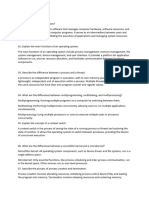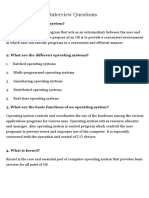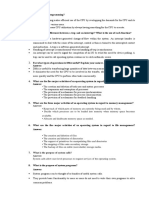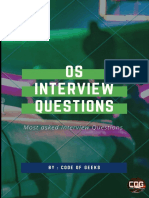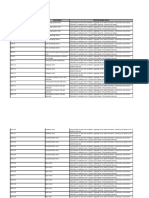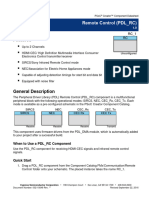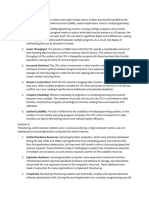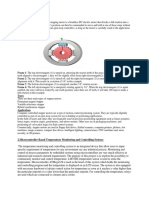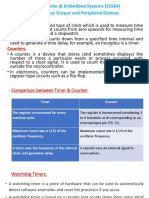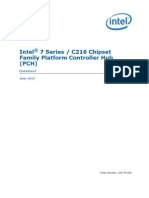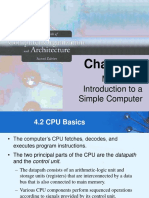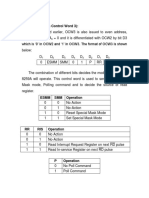0% found this document useful (0 votes)
13 views10 pagesOS Interview Questions For Beginners
The document provides a comprehensive overview of operating system interview questions and answers, covering fundamental concepts such as the definition of an operating system, its functions, types, and various processes. It includes topics like memory management, multitasking, deadlocks, and inter-process communication, as well as advanced concepts like semaphores and mutexes. The content is structured for beginners to advanced programmers, making it a valuable resource for preparing for OS-related interviews.
Uploaded by
Akash RajCopyright
© © All Rights Reserved
We take content rights seriously. If you suspect this is your content, claim it here.
Available Formats
Download as DOCX, PDF, TXT or read online on Scribd
0% found this document useful (0 votes)
13 views10 pagesOS Interview Questions For Beginners
The document provides a comprehensive overview of operating system interview questions and answers, covering fundamental concepts such as the definition of an operating system, its functions, types, and various processes. It includes topics like memory management, multitasking, deadlocks, and inter-process communication, as well as advanced concepts like semaphores and mutexes. The content is structured for beginners to advanced programmers, making it a valuable resource for preparing for OS-related interviews.
Uploaded by
Akash RajCopyright
© © All Rights Reserved
We take content rights seriously. If you suspect this is your content, claim it here.
Available Formats
Download as DOCX, PDF, TXT or read online on Scribd
/ 10



































